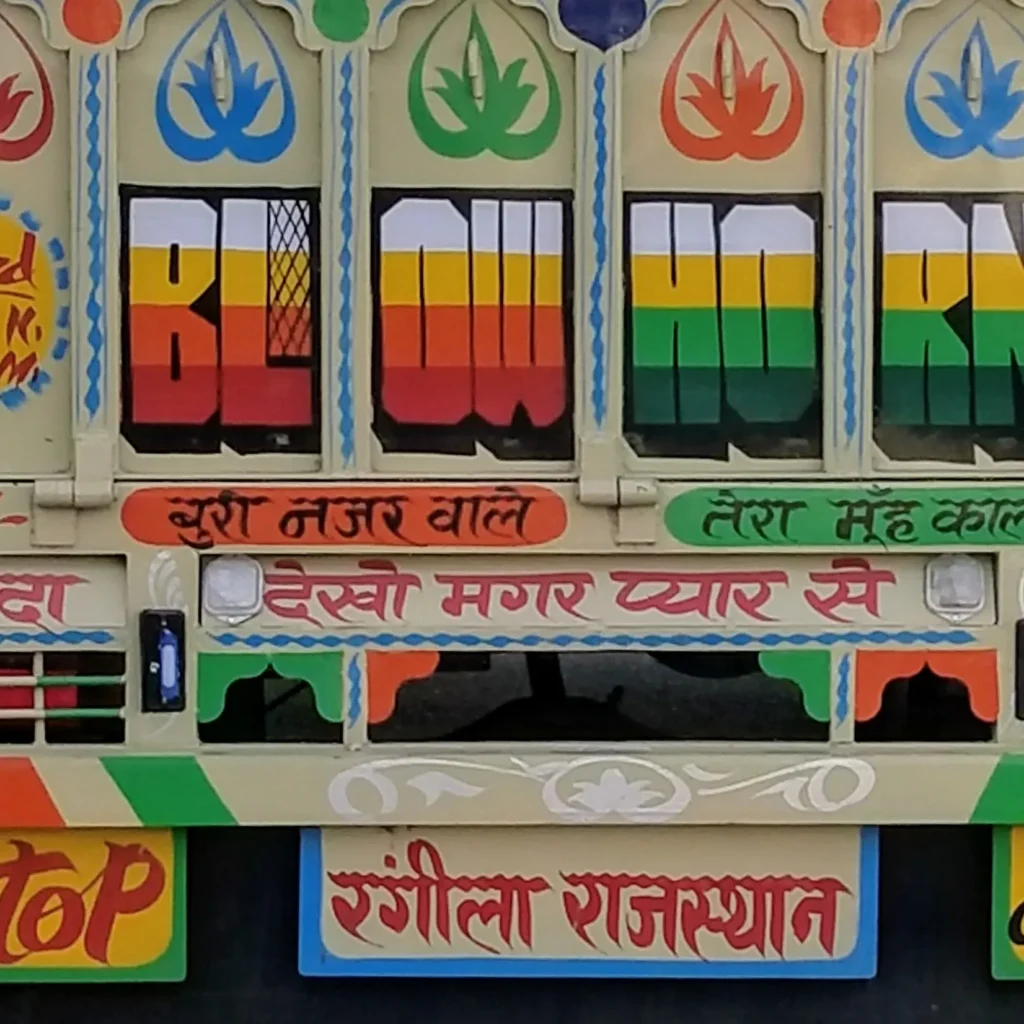We were hemmed in by a pack of gaily painted and be-ribboned trucks on a busy two-way street in Jaipur, India. The command to “blow horn” was decoratively painted on the back of every one of those trucks, sometimes twice.
Not that anyone needs persuasion. Blowing horns is the common language of India’s drivers. They chatter constantly to one another. Some favor the short, continuous toot. Others prefer a long blast. Together, the cacophony calls to mind a discordant orchestral warm-up session. And if there are no other vehicles on the road? Drivers blow the horn to break the silence.

Traffic — well, surviving traffic — may be the most exciting adventure travelers to India will experience. And it’s an unavoidable adventure, if you’re going to get anywhere. So there I sat, in the back of a covered three-wheel motorbike — a tuk-tuk — with a two-stroke engine producing all the noise but none of the power of a top-end BMW road hog. We were wedged, nose first, into a small opening between trucks, making our way, inch-by-inch, toward a mountaintop fortress. I met the eyes of the motorcyclist to the left, who was also aiming to squeeze between the trucks. I could have reached out to shake hands. Same on the right side.
Rules of the road are flexible in India— open for interpretation, you might say. Traffic lights, especially red lights, are more suggestions than strict instructions. Lane markings are guidelines. A two- or three-lane highway, for example, easily accommodates up to four more lanes, particularly when there are sidewalks or flat shoulders to use for passing. I have watched — from the back seat of a car — as two or three semis fought over the single lane ahead of us, seemingly unaware of smaller vehicles like mine.
Zoom image will be displayed
Ifyou think I’m kidding, let me tell you about a taxi trip from New Delhi to Agra, to see the Taj Mahal. My most macho brother was in the front seat. He was so unnerved by the chaos, he kept shouting out the window: “No brakes! Get out of the way! No brakes!” After 30 minutes, we switched seats so he could sit in the back. On the other hand, I took a cousin to India recently and she insisted on the front seat. Sitting in the back of a stop-and-lurch vehicle made her carsick.
Longer trips call for a car and driver, or even a train. But for efficiency in cities, you can’t beat the tuk-tuks. They’re designed for a driver and two, maybe three, passengers, and are the favored transport of saree-wrapped women and small families.
Then again, space in India is what you make of it. I’ve seen tuk-tuks with four men wedged into the narrow back luggage space, facing outward, with their legs hanging over the edge. Another four occupied the seat built for three. An additional three faced those passengers, their butts perched on the rail separating the passenger space from the driver. With a willing driver, one more can be fitted into the front space.
Leave A Comment